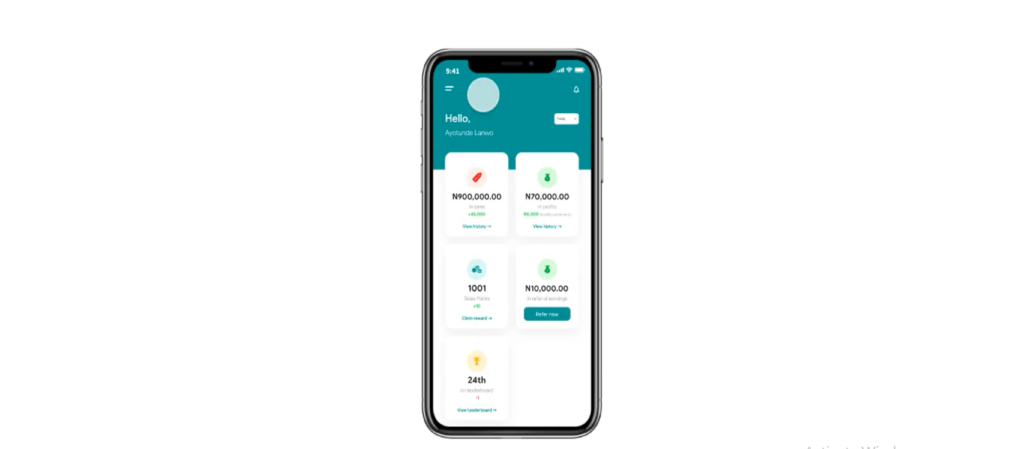Kuuzza – Digitising dropshipping and affiliate marketing (Anyone can sell!)

Visit Website
Facilitating sales for manufacturers and retailers using technology
Kuuzza is a decentralized sales platform that enables anyone to facilitate sales on behalf of retailers, without needing any upfront capital. For businesses, it presents an opportunity to scale into multiple regions without need for costly physical setups. The project consists of responsive web (mobile and desktop admin) applications.
Problem Statement
Unemployment rates in Nigeria are as high as 23%, meaning thousands of young, educated and resourceful Nigerians have absolutely nothing to do. Mobile penetration has ushered in a generation of business owners from the comfort of their homes, with most turning their social media platforms into online shops. How can we bridge this unemployment gap with the help of information technology?
Users and Audience
After combining the major findings from the interviews and the surveys with other research reports I gathered online, I listed the insights I had developed which could impact the future design, sorted them and projected the following stakeholders:
- Sales Persons– Anyone who wishes to, can sell!
- Manufacturers– Manufacturers who need proactive sellers to boost sales.
- Distribution Companies– Established distribution companies looking for innovative ways to uplift sales by decentralizing sales outlets.
- E-commerce Companies looking for innovative ways to expand their reach without having to set up physical infrastructure.
My Role
I was responsible for extensive user research and user experience design. I was the only designer on the project, however, I collaborated remotely with a product manager and a team of developers. The user interface design was done with Figma and Adobe XD, with clickable prototypes available at every stage for user testing and subsequent iterations.
The major constraints on this project were unexpected scope changes with new developments. This brought about numerous design changes to fit the new scope, which affected set timelines.
Research
Through secondary research and interviews with ideal user personas, I gained an initial understanding of the target user’s motivations, goals, and barriers. Some of the insights gathered include:
- Anyone looking to earn more income could be a target user, therefore sign-up requirements have to be as minimal as possible, with more relevant information collected at the point of withdrawing earnings, eliminating the risk of users losing interest while signing up in the first place.
- The idea of selling could be gamified, encouraging more participation from users with custom leaderboards showing top performers with retailers rewarding top performers with rewards.
For a very robust application with a lot of functionalities, I simplified and broke down the key processes into the following steps:
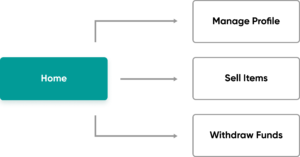
The Design Process
Before diving into design proper, I designed some wireframes with an emphasis on the flow and functionality of the application.
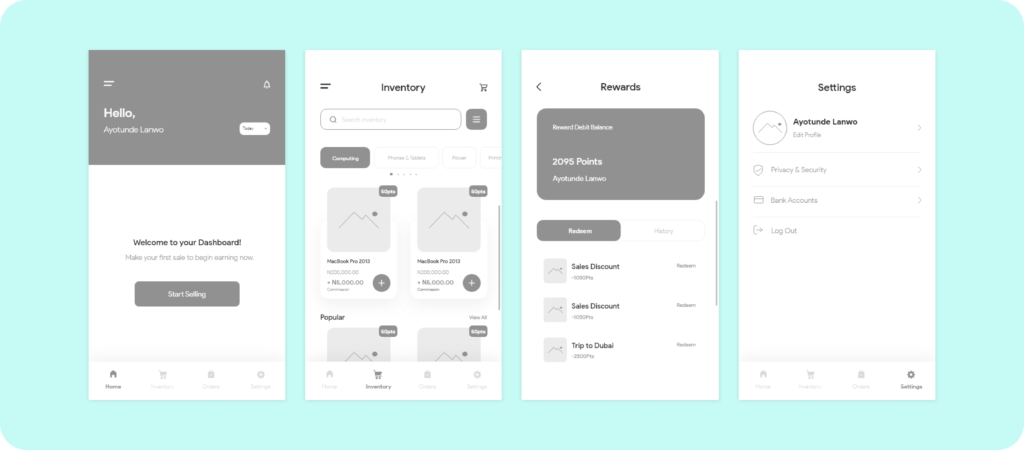
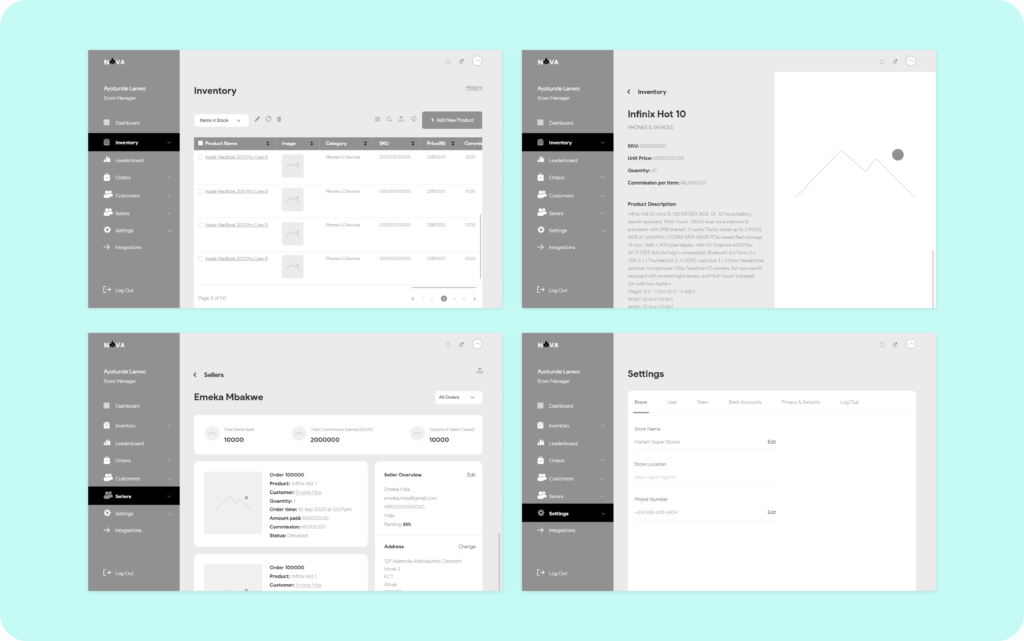
Usability Testing and Iteration
I went through rounds of usability testing, module by module, users tested all functionalities with the clickable prototype, all concerns were taken into account, and changes implemented, when necessary.
Some key changes made after usability testing included
- Making a dashboard showing user metrics “home page” on the mobile app, as opposed to the original Inventory page as the home page. Users preferred seeing their performance first.
- Allowing users to resell and notify their customers without reloading any new pages directly on the product page, using a fixed pop-up.
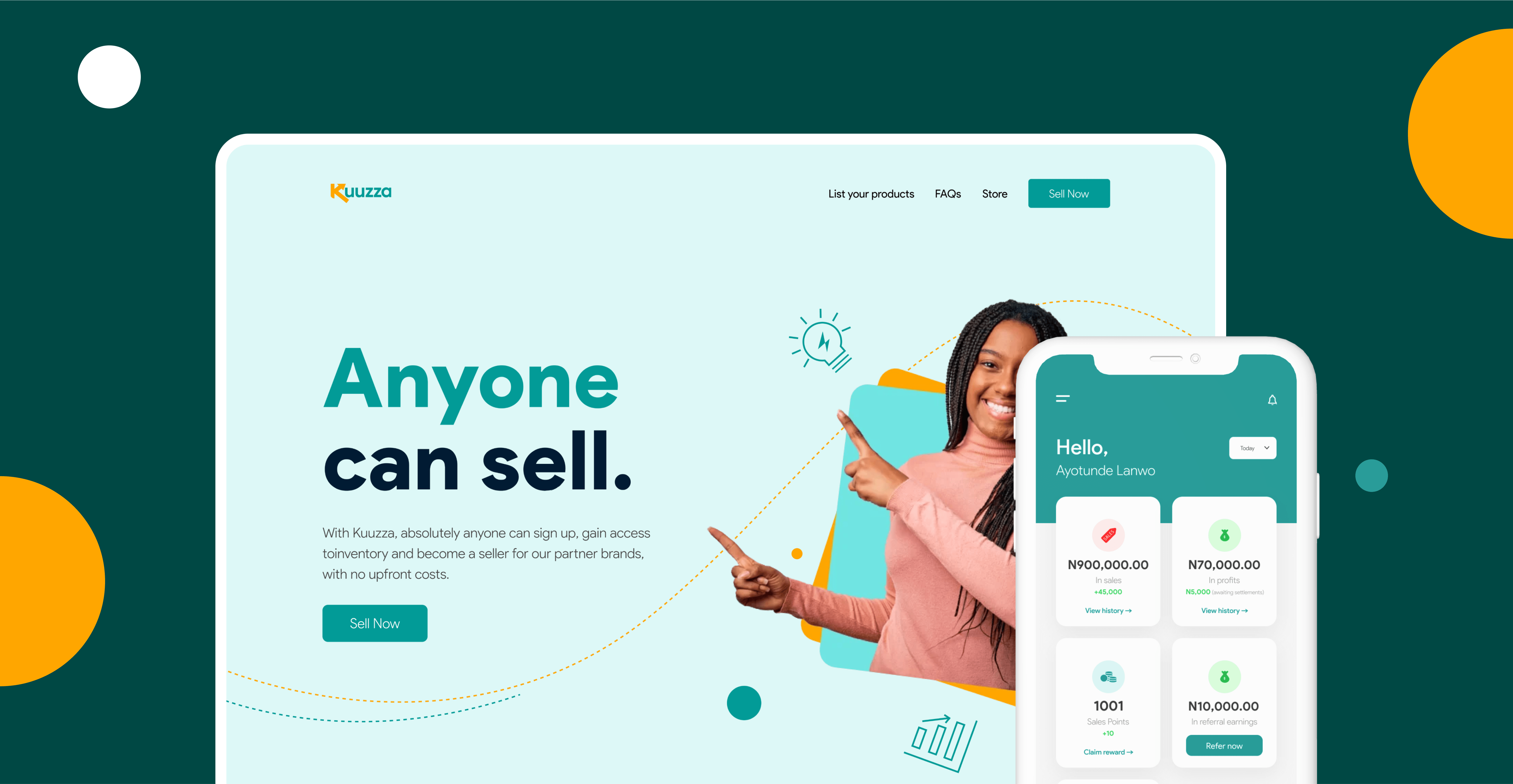
Prototype
Here’s a prototype showing some basic functionalities of Kuuzza.
